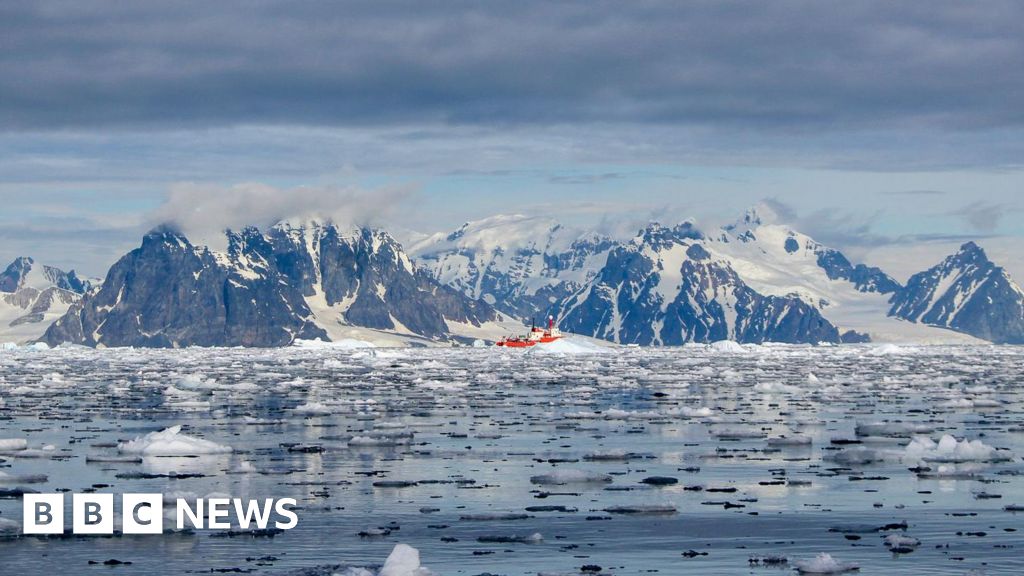BBC News Science team
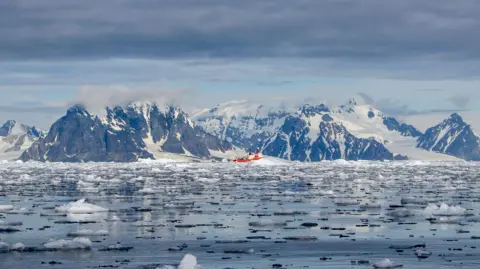 Elisenda Balleste
Elisenda BallesteWhy would anyone brave hand-numbing cold, icy winds and rough seas – sometimes working through the night – to dig up mud from the Antarctic seabed?
That is what an international team of particularly adventurous researchers did earlier this year in the remote Antarctic Peninsula, on a mission aiming to reveal centuries of scientific secrets about the Southern Ocean.
Scientists around the world will now share and analyse these precious mud samples to work out how human activity – including a century of industrial whaling – affected Antarctica and the rest of our planet.
The research is part of a global effort to understand the relationship between the ocean and the climate.
 Elisenda Balleste
Elisenda BallesteA history of ocean life
Researchers used a special coring drill – a bit like a huge apple-corer – tethered to a research ship, to drill at depths of up to 500m.
They collected more than 40 long cores, or tubes, of seafloor sediment from locations around the peninsula.
This is one of the richest habitats for marine life in Antarctica, and a focal point for fishing, tourism and – before it was banned in the 1980s – industrial whale hunting.
Collecting the sediment gives insight and clues to the past, “like a book of history”, explained lead researcher Dr Elisenda Balleste from the University of Barcelona.
“What is living in the seas now, what was living in the seas in the past and evidence of our human impact” is recorded in layer upon layer of sediment over centuries, she said.
By preserving and dating those layers, and analysing what they contain, researchers can build a picture of the history of Antarctic marine life.
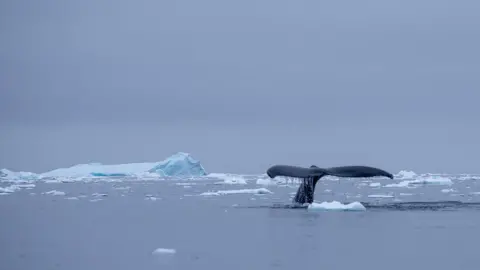 Victoria Gill/BBC
Victoria Gill/BBCOnce on board the ship, the cores were frozen and transported to Barcelona and Dr Balleste’s laboratory.
From there, carefully extracted pieces of this Antarctic mud will be sent out to several academic institutions around the world.
Scientists will scan and date the sediment layers, work out what microbial life they contain, measure levels of pollution and calculate how much carbon is buried in the mud.
It is part of a mission – the Convex Seascape Survey – which involves universities and research institutions around the globe working together to better understand how our ocean and climate are connected.
Claire Allen, an oceanographer from the British Antarctic Survey who has studied Antarctica’s past for more than 20 years, said that cores like these were particularly valuable.
“Before 1950 – before there was any kind of monitoring capacity in Antarctica – sediment cores and ice cores are the only way that we can get an insight into any of the climatic or physical properties that have changed over time,” she said.
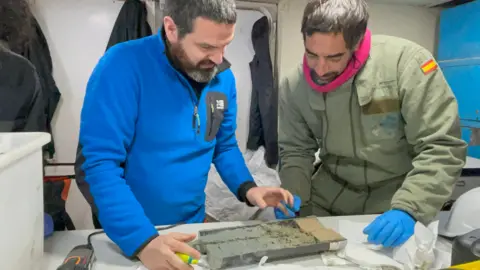 Elisenda Balleste
Elisenda BallesteThe DNA fingerprint from whale hunting
The newly collected samples being stored for DNA analysis have to be kept at temperatures low enough to stop all biological processes.
Dr Balleste took them out of the industrial-sized freezer where they are being stored to show them to us, very briefly.
“They’re kept at minus 80 degrees to stop them degrading,” she explained.
These small pieces of the seabed – frozen in time at temperatures that preserve genetic material – will be used for what is known as environmental DNA analysis.
It is an area of science which has developed rapidly in recent years. It gives researchers the ability to extract genetic information from water, soil and even air, like a fingerprint of life left behind in the environment.
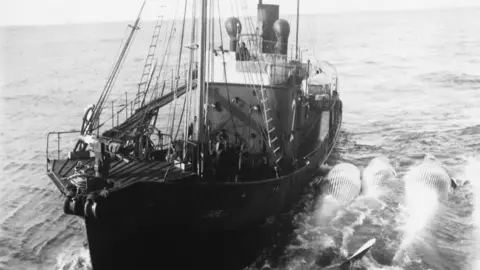 Getty Images
Getty ImagesDr Carlos Preckler, from King Abdullah University in Saudi Arabia, is leading this part of the research and will be trying to measure how almost a century of industrial whaling in Antarctica affected the ocean and our atmosphere.
Carbon – when it is released into the atmosphere as carbon dioxide – warms up our planet like a blanket.
So, as the world struggles to reduce those emissions, any processes that absorb and lock significant amounts of carbon might help to rein in global warming.
“We know whales have a lot of carbon in their bodies, because they are huge animals,” said Dr Preckler.
What he and his colleagues want to know is how much of that carbon gets buried in the seafloor – and locked away from the atmosphere – when the animals die.
“We can measure whale DNA and the carbon in the sediment,” explained Dr Preckler.
“So we can measure what happened before industrial whaling removed most of the whales in the [Southern] ocean,” he added.
That, the researchers say, will provide a measure of how much whales – simply by existing, being huge and living out their natural lives – remove carbon from our atmosphere and help in the fight against climate change.
